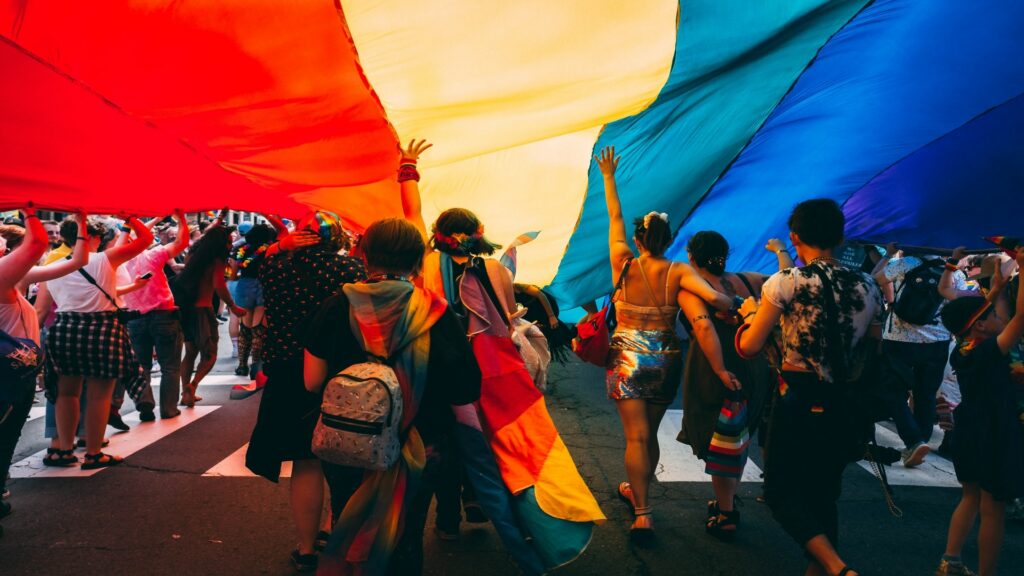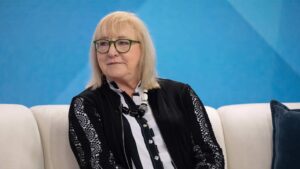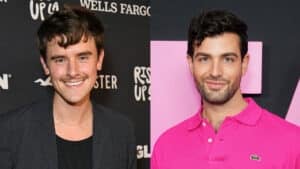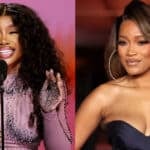No, your lesbian friend does not want to have sex with you. Contrary to what you might think, she is not in love with you either. This generalization is simply one of the many LGBTQ tropes used in media and popular culture.
Representation for the queer community is scant in supply and over-used stock characters provide inauthentic depictions of the community while displaying lazy, performative inclusion on behalf of writers everywhere. While not all tropes inherently perpetuate negative stereotypes it is important to be aware of the cliched tropes to realize that humans are more nuanced than the stereotypes that restrict them.

1. The Gay Best Friend
Before swarming the nearest gay man and asking for a trip to the mall or matching toe rings, ask yourself, does he even want to be my best friend? The “Gay Best Friend” trope was a staple in the onslaught of the romantic comedies and cult classic high school shows of the early 2000s, and reinforce the stereotype of effeminate gay men. These men have a passion for shopping, drama, and fulfilling the main character’s wishes with no storyline or original traits of their own. A prime example of the lovable, flamboyant G.B. F is Christian from Clueless (1995). Cher’s friends describe him as a “disco-dancing, Oscar Wilde-reading, Streisand ticket-holding friend of Dorothy.” Other examples include Standford Blatch from Sex and the City, and Damian from Mean Girls(2004). Having a best friend who happens to be gay is not the issue within this trope. Frankly, many of my favorite characters are sexually fluid and a force to be reckoned with. The issue lies in the stereotypical traits given to the characters, along with their presence acting as an accessory to the usually white-female lead. Recently, self-aware queer characters like Donny in Isn’t It Romantic have successfully satirized the trope, portraying the pitfalls and pleasures of the stereotype.

2. The Transgender Sex-Worker
The hyper-sexualized transgender sex worker is one of the most tone-deaf tropes portrayed in media. Trans people are one of the most marginalized and underrepresented groups within the queer community. Finally, when they get a chance to be on screen, they are often type-cast as sex workers. Straight characters can have entire careers where their genitals are not mentioned once. The same can not be said of trans-characters and actors largely due to the hyper fixation of their genitalia. There are indeed trans sex workers, and their stories deserve to be told. However, when telling these stories, it is integral to clarify why and how the community of trans-sex workers came to be. The reality is trans folk have historically been forced into sex work due to employment discrimination and fetishization. While there is nothing inherently wrong with sex work, it is wrong to repeatedly relegate trans folk to sexual deviants or exploited sex workers when there are so many more stories to be told.
3. Murderous Bisexual
Not all bisexuals are down with death. Television and Film often portray murderous bisexuals with plots on top of subplots of killing. These story lines usually involve the vengeance of a former lover’s death or a mere tendency to kill. GLAAD, the leading American monitoring agency that studies discrimination and representation in media, has repeatedly included the trope in its “What We Are on TV Surveys”. These stereotypes conflate bisexuals’ attraction to multiple genders with increased emotionality and compulsory issues. Examples of this trope are lie in the corrupt and manipulative Frank Underwood from House of Cards or the defense lawyer Annalise Keating that goes too far in the ABC show, How to Get Away with Murder. The truth is, whatever gender someone is attracted to has no bearing on the presence or lack thereof of sociopathic, murderous tendencies. So, someone call Hollywood because they’ve got it wrong.
ADVERTISEMENT

4. “Bury Your Gays”
The “Bury Your Gays Trope” (formerly known as Dead Lesbian Syndrome) repeatedly ends with queer characters dying a painful and borderline unnecessary death. After the implementation of Hay’s Code in the early 1930s, gay characters were not allowed to be seen in television and film without backlash or career suicide. So, to keep homophobic audiences in their good graces, queer presenting characters could never get a happy ending if they were in media. This disheartening trend exemplified the consequences of queerness, and although Hay’s Code is long over, writers seem to revel in the death of their favorite queer characters. Popular examples of this trope can be seen in The 100, Buffy the Vampire Slayer, The Walking Dead, and Brokeback Mountain. Specifically, after a fan favorite died in The 100 (don’t worry, no spoilers here !) the twitter verse ignited with audience backlash condemning the writers for the episode. As much as decision-makers want to keep killing queer characters, that is the last thing the audience wants. If not for ethical reasons, producers should keep their bottom line in mind before beheading their next target.

5. The Sissy
This stereotype is one of the most common and is born out of the ignorant assumption that men can be both masculine and queer. “The Sissy” is a male stereotype that assumes queer men are ultra-feminine, possess a flair for the dramatic, maintain a love of shopping, and are generally lovers of anything flamboyant and flouncy. Although gay men may take pride or enjoyment in these traits, it is not synonymous with their sexuality. This trope is so evident that if you think of a gay man right now – you probably picture an outgoing shopaholic with an ascot and the tendency to gossip. This instantaneous association with gayness and these characteristics show the power of representation and how it infiltrates everything from our media to our minds.

6. The Promiscuous Queer
The promiscuous queer character is a trope based on societies real-life stereotypes bestowed against those in the queer community, namely gay men. This trope is historically tied to the gay liberation movement. Early queer activists actively promoted differences in straight and queer culture. In doing so they turned away from societally standard marriage values and promoted non monogamous relationships and an aversion to the status quo. This protest against societal norms led to the stigmatization of queerness with promiscuity. This information was then weaponized during the AIDS pandemic to vilify and victim-blame gay men. Nowadays, the sentiment remains as members of the queer community are continuing represented with a wandering eye, a lackluster sense of loyalty, and blatant hyper-sexualization benefitting a heteronormative voyeur. Although some gays may be proud sluts, the generalization of promiscuity’s association with sexuality needs to be stopped.
ADVERTISEMENT

7. Large Age Gaps in Queer relationships
Large age – gaps have always been prevalent in Hollywood. Clueless, Dirty Dancing, Sound of Music, Gone with the Wind, and many other classic films feature large age gaps between their male and female leads. However, the content is executed as if the age gap doesn’t exist. In LGBTQ+ films there are also many large age- gaps but they are seen as predatory and disgusting. Age gaps, large or not, exist in healthy straight and queer couples and it is important to remember that any trope is not inherently harmful, it is simply a pattern of repeated behaviors actions or attributes. However, there is such a negative stigma around gay age-gaps that these negative stereotypes are being perpetuated in media when there are so many more stories to tell. Examples of this phenomenon that has become overdone include characters from Call me By Your Name, Ammonite, Shelter, and Beach Rats.

8. Bi-Erasing Bisexual
Bisexual identities are often being erased. Stigmas state that bisexual men are at a pit-stopp to full gayness and are only attracted to men while bisexual women are confused and also only attracted to men. Either way societies standard for love interests are men. Considering that the media and everything else caters to said men this fact is not surprising. Furthermore, this idea is being perpetuated by bisexual characters erasing their own identitiy on screen. A prime example of this would be Frank Underwood in House of Cards, Within the show Underwood has sex with both men and women. However, the word bisexual never escapes his lips even off screen as bisexuality is alluded to. Underwood’s sexuality is referred to as “a presence” or doesn’t want to be “pinned down”. The ambiguity of his sexuality when it is so clearly used for plot devices and steamy sex scenes is concrete bi-erasure through and through. The usage of bisexual acts for views and ratings without the proper representation and acknowledgment of Underwood’s sexuality is promoting erasure. Furthermore, If there was a single bisexual in the writer’s room, this wouldn’t be an issue.

9. The Villain
If you look at any Disney movie, there is a good chance the villain seems gay. Disney as well as many other giant media companies have been queercoding their villains for centuries. Male villains like Jafar from Aladdin (1992) or Captain Hook from Peter Pan (1953) carry the same effeminate aura around them. These villains have an affinity for ruffles, a flair for the dramatic, and all seem to be obsessed with their arch nemesis, a little boy. Animated films seem to villainize stereotypical traits of queerness and constantly reinforce the association of gayness with villainy. This trope travels across genders as well with the female villains obtaining more masculine traits of stoicism, short hair, and large tempers. These attributes can be seen in Maleficent, The Evil Queen, Yzma, and notably Ursula who was created after Drag Queen, Divine. Apart from animated movies, the horror genre also fuels the perpetuation of evil queer characters by reinforcing the killing crossdresser trope seen in Psycho and Rocky Horror Picture show.

10. Queer Off-Screen Only
You have heard of queercoding, or the implementation of queer stereotypes onto straight characters, but have you heard of straight washing? This is when characters are originally written to be a part of the LGBTQ community, but their sexualities are turned straight to appease mainstream audiences and major media corporations. The reasons for this throughout the years are usually vague and unassuming, with excuses like “it isn’t right for our brand” and “it just wasn’t a right fit for us”. It refers to the character’s original sexuality that modern-day decision-makers avoid like the plague. What is worse, is that there is not a single studio or company that engages in straight washing, many of them are guilty. Popular examples of these straight-washed characters include Ayo (Black Panther), John Constantine (Constantine), Jughead Jones (Riverdale), Mystique (X Men), Hercules (Hercules), Harley Quinn (Suicide Squad), and Abraham Lincoln (Lincoln) to name a few. These characters, among many more ,are examples of companies that have the power and capital to use their resources to normalize queerness on screen, and instead they erase them from the universes they were already written into. The straight washing of character by major companies is regressive in the fight for proper representation, and they are actively throwing away the power to enact real change within the industry. I am saddened, but not surprised, and I patiently wait for the next generation of decision-makers to use their power to be on the right side of history.









